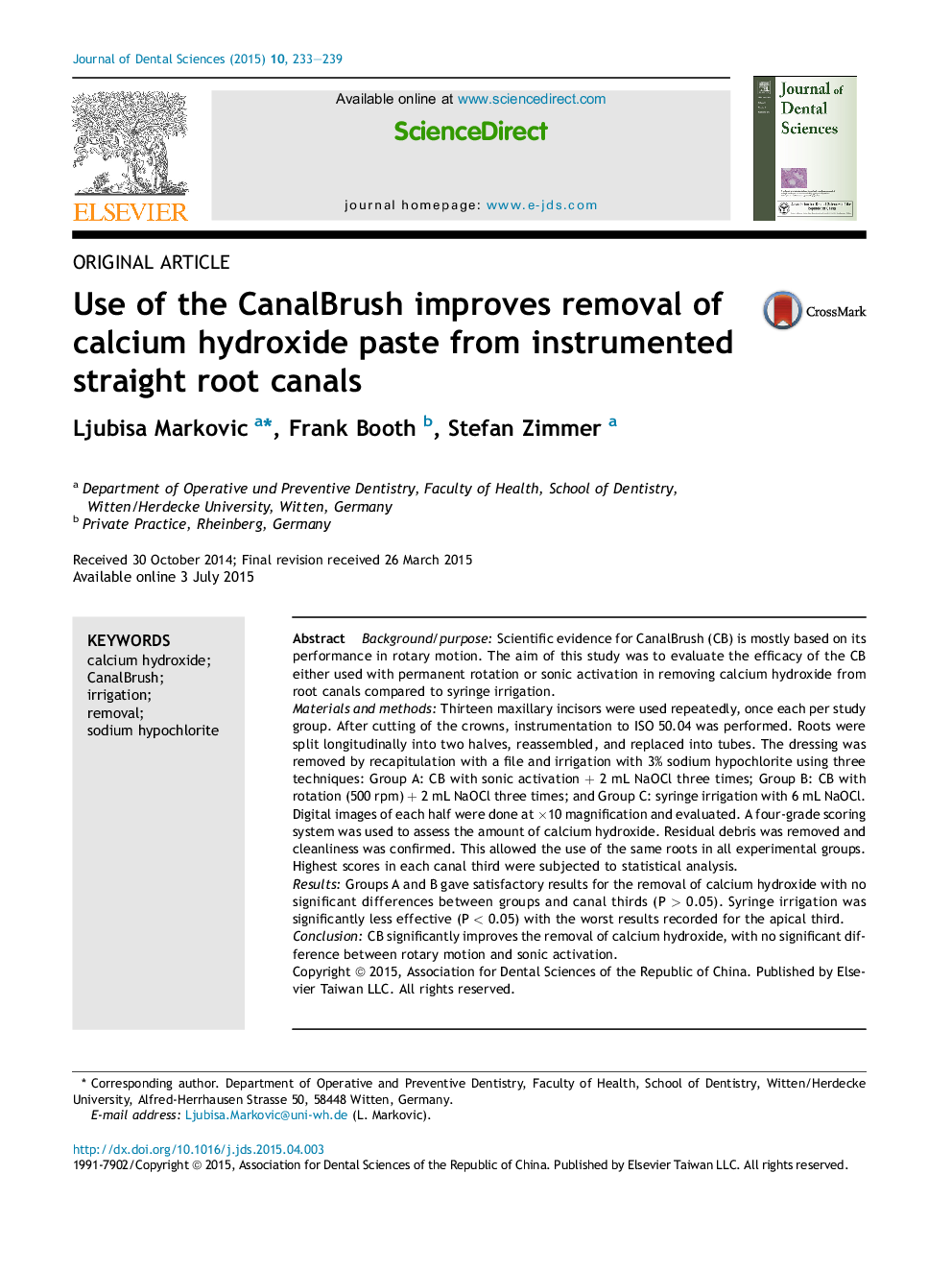| Article ID | Journal | Published Year | Pages | File Type |
|---|---|---|---|---|
| 3144638 | Journal of Dental Sciences | 2015 | 7 Pages |
Background/purposeScientific evidence for CanalBrush (CB) is mostly based on its performance in rotary motion. The aim of this study was to evaluate the efficacy of the CB either used with permanent rotation or sonic activation in removing calcium hydroxide from root canals compared to syringe irrigation.Materials and methodsThirteen maxillary incisors were used repeatedly, once each per study group. After cutting of the crowns, instrumentation to ISO 50.04 was performed. Roots were split longitudinally into two halves, reassembled, and replaced into tubes. The dressing was removed by recapitulation with a file and irrigation with 3% sodium hypochlorite using three techniques: Group A: CB with sonic activation + 2 mL NaOCl three times; Group B: CB with rotation (500 rpm) + 2 mL NaOCl three times; and Group C: syringe irrigation with 6 mL NaOCl. Digital images of each half were done at ×10 magnification and evaluated. A four-grade scoring system was used to assess the amount of calcium hydroxide. Residual debris was removed and cleanliness was confirmed. This allowed the use of the same roots in all experimental groups. Highest scores in each canal third were subjected to statistical analysis.ResultsGroups A and B gave satisfactory results for the removal of calcium hydroxide with no significant differences between groups and canal thirds (P > 0.05). Syringe irrigation was significantly less effective (P < 0.05) with the worst results recorded for the apical third.ConclusionCB significantly improves the removal of calcium hydroxide, with no significant difference between rotary motion and sonic activation.
